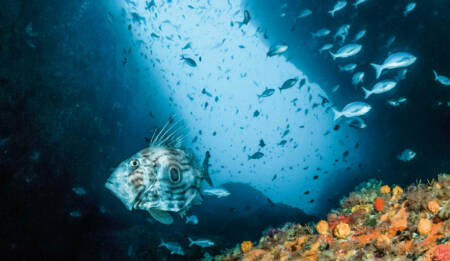Spatially-explicit cumulative effects tools
This project incorporates cumulative effects of multiple stressors from human activities on land and sea into decision-making tools.

Background
One of the challenges of ecosystem-based management (EBM) is the difficulty of incorporating the cumulative effects of multiple stressors into decision-making.
Current marine management practice typically focuses on single stressors, or single sectors, habitats or species. However, the interactions between multiple stressors and where and when a stressor footprint occurs are important considerations when determining effects on ecosystems.
Few tools exist to assess the cumulative effects of multiple stressors in marine ecosystems. This makes effective management difficult and can create uncertainty in management decisions about an ecosystem’s capacity to cope with the effects of new activities.
This project is part of the New Zealand government’s Sustainable Seas National Science Challenge / Ko ngā moana whakauka.
Project details
This project is building the capacity of existing marine spatial management tools to include assessment of cumulative effects.
New decision support tools will benefit from the findings of a companion project looking at ecological responses to cumulative effects. This is looking at the interactions between stressors, and how these stressors act both singularly and in combination.
These new tools can help decision-makers better understand cumulative effects and develop robust criteria for assessing whether new activities can be accommodated or are likely to trigger an ecological tipping point.
This project is developing three models - stressor interactions, system capacity and recovery dynamics. They will be user-tested at national, regional and local rohe moana levels and include SeaSketch education support tools.
What they hope to achieve
This research will lead to frameworks that improve decision-making about the risks posed by different activities in the marine environment. It will identify opportunities to improve the mauri / ecological health and lifeforce of Aotearoa New Zealand’s coasts and estuaries.
Resource



